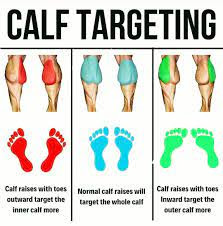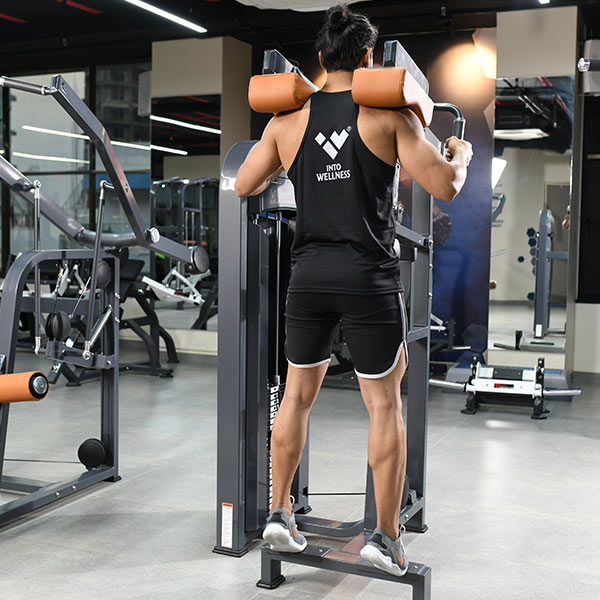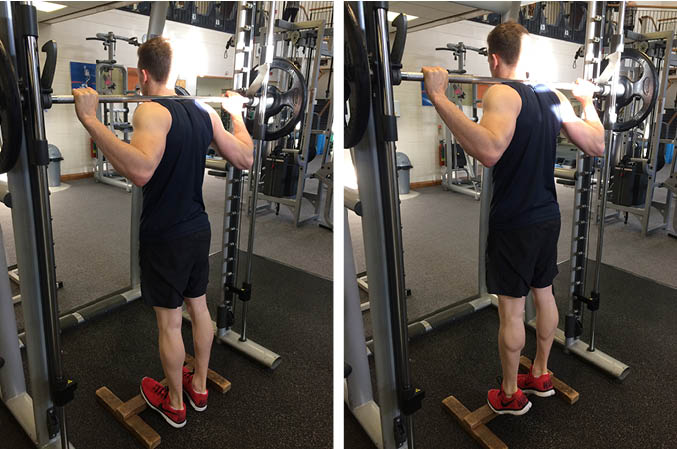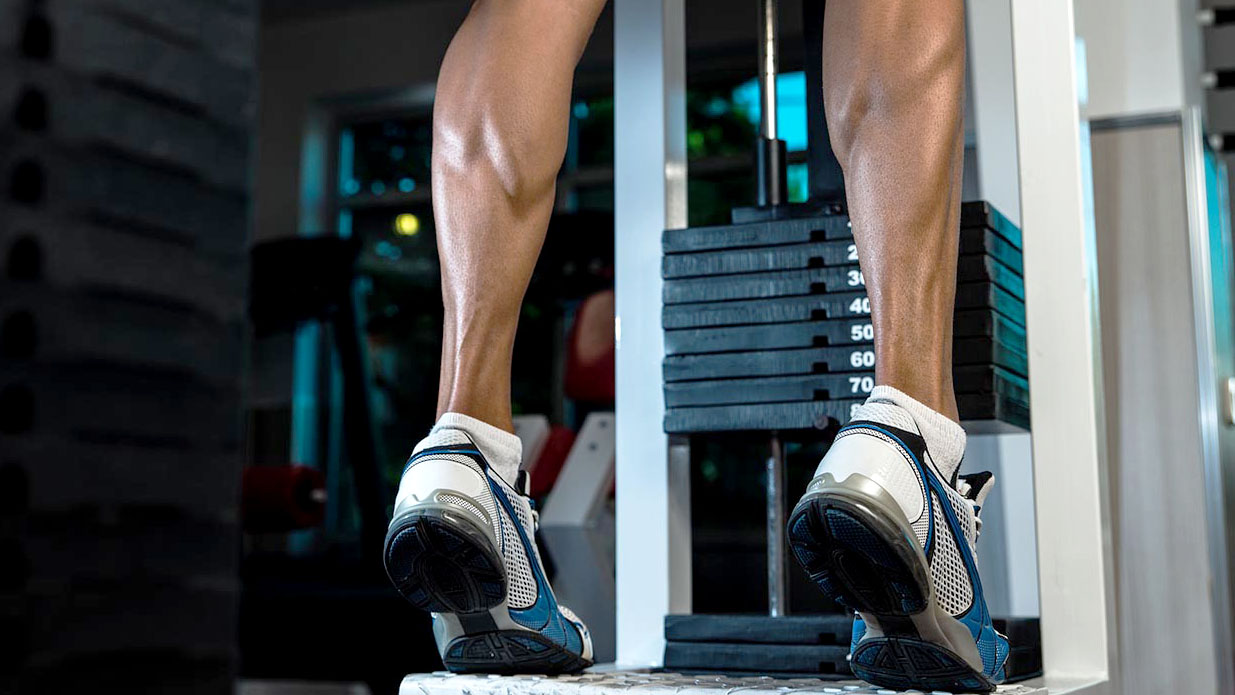
What are standing calf raises?
Standing calf raises are a resistance exercise that targets the calf muscles in the lower leg. There are a few different variations of the calf raise.
They can be performed on a seated calf raise machine or on a leg press machine, but for this article, we will focus on the standing calf raise, the muscles that it works on and how to perform it.
The calf muscles are often overlooked by a lot of bodybuilders and strength trainers. Many believe that the size of your calf muscle is genetic and trying to grow them is a waste of time.
There is some truth to this. Some people have naturally big calf muscles or find it easy to grow them, whereas others have naturally skinny legs and struggle to make gains. Although it is a stubborn muscle, it will grow with regular training and good nutrition.
Which muscles are targeted with standing calf raises?
As the name of the exercise suggests, the target muscles are the calf muscles. The calves are made up of two separate muscles, the Gastrocnemius, which is the large, twin-headed muscle at the top of the lower leg, and the Soleus, which lies underneath it.
The main responsibility for both muscles is the flexion of the ankle so that you can point your toes.
Do not be fooled into only performing exercises that target the Gastrocnemius because it looks like the biggest and more predominant muscle. Targeting and developing the Soleus pushes the Gastrochnemius up and out, giving your calves an all-around full and defined shape.
It is possible to target different parts of the calf muscles by adjusting your foot placement with a standing calf raise.
A neutral stance with feet both facing forward will activate all of the muscles in the calf to a similar degree. If you want to place more emphasis on your outer calves to add width, you can turn your toes in towards each other and to define the inner calf muscle, turn your toes out.
Targeting different areas of the calf can be done on a leg press or calf raise machine as well as with a standing calf raise.
It is a good idea to hit your calves from a variety of angles to guarantee that all of the fibres are being broken down. Take your calf training to failure on all working sets. They are used to regular, light use in day-to-day life, so to promote growth you need to push them outside the norm.
How do I do standing calf raises?
Bodyweight calf raise.
A good place to start with calf raises is with your body weight. You may have strong calves and be able to move straight on to one-legged calf raises or calf raises with resistance, but if you have never tried them before, start here.
You do not need any specialist equipment for a bodyweight standing calf raise, just a step or a block to rest the balls of your feet on.
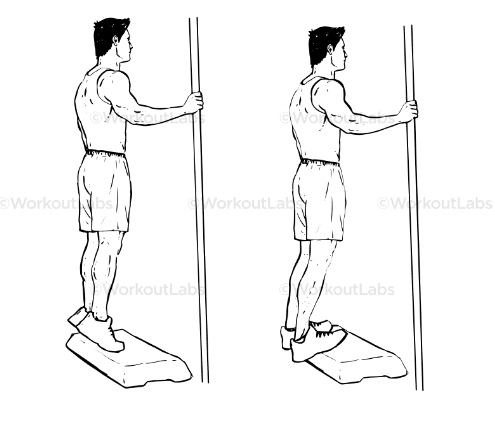
- Grab a step, block, or use the bottom step on your staircase.
- Stand on it with the balls of your feet. It is advisable to do this exercise without shoes, but if you do choose to wear them, make sure that they are tight-fitting and securely fastened.
- Place hands on a wall or the back of a chair so that you do not need to worry about balance.
- Place your feet slightly apart and facing forward for a neutral stance.
- Slowly lower your heels off the edge of the step so that your toes are pointing upwards. When you can feel that your calf is stretched as far as it will go, you are at your starting position.
- Take a deep breath and upon exhaling, press your body up by pointing your toes. Keep pressing until you are on your tiptoes.
- Hold this position for a second or two before slowly lowering back to the starting position.
- Repeat until you can not complete a rep and rest before starting another set.
One legged calf raises.
If you find standing calf raises with bodyweight to be easy and do not have access to any resistance equipment, consider using one-legged calf raises. This is the same movement as the traditional standing calf raise as detailed above, but the entire body weight is placed on one leg at a time, making it much harder.
Set up exactly as you would for a normal standing calf raise. Before pressing the body up, take one foot off the step and tuck it behind your working leg.
Continue the exercise with the standing leg to failure and then alternate to the resting leg. You will probably need a wall or the back of a chair as a support for this exercise so that you can focus on muscle connection rather than balance.
Machine standing calf raises.
Many gyms will have a dedicated standing calf raise machine or a hack squat machine that can be used for standing calf raises. These are a great way to add resistance to your calf raises in a safe way.
As it is a fixed machine, you do not need to worry about balance or stabilising a barbell, leaving you free to focus on muscle contraction.
